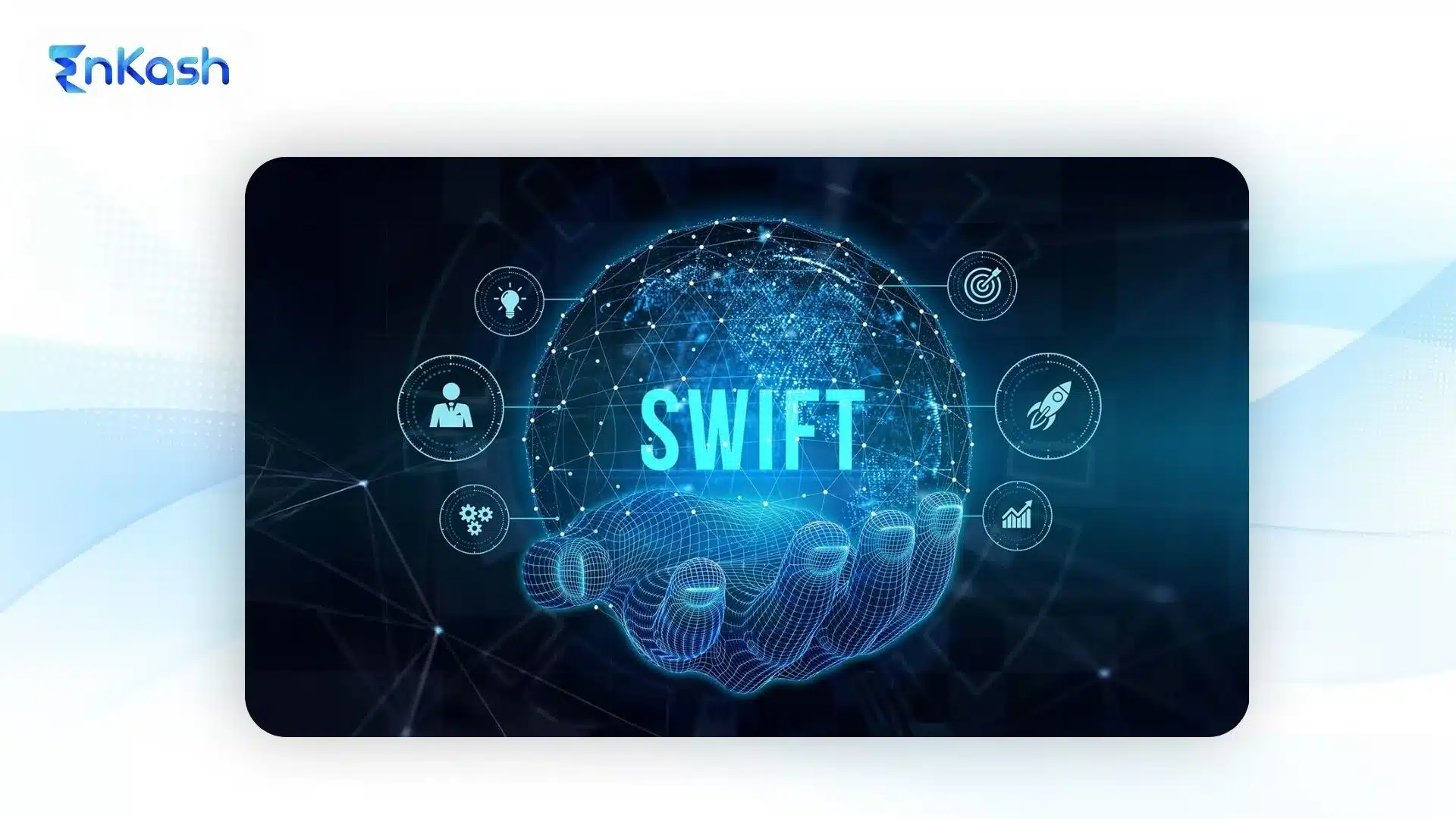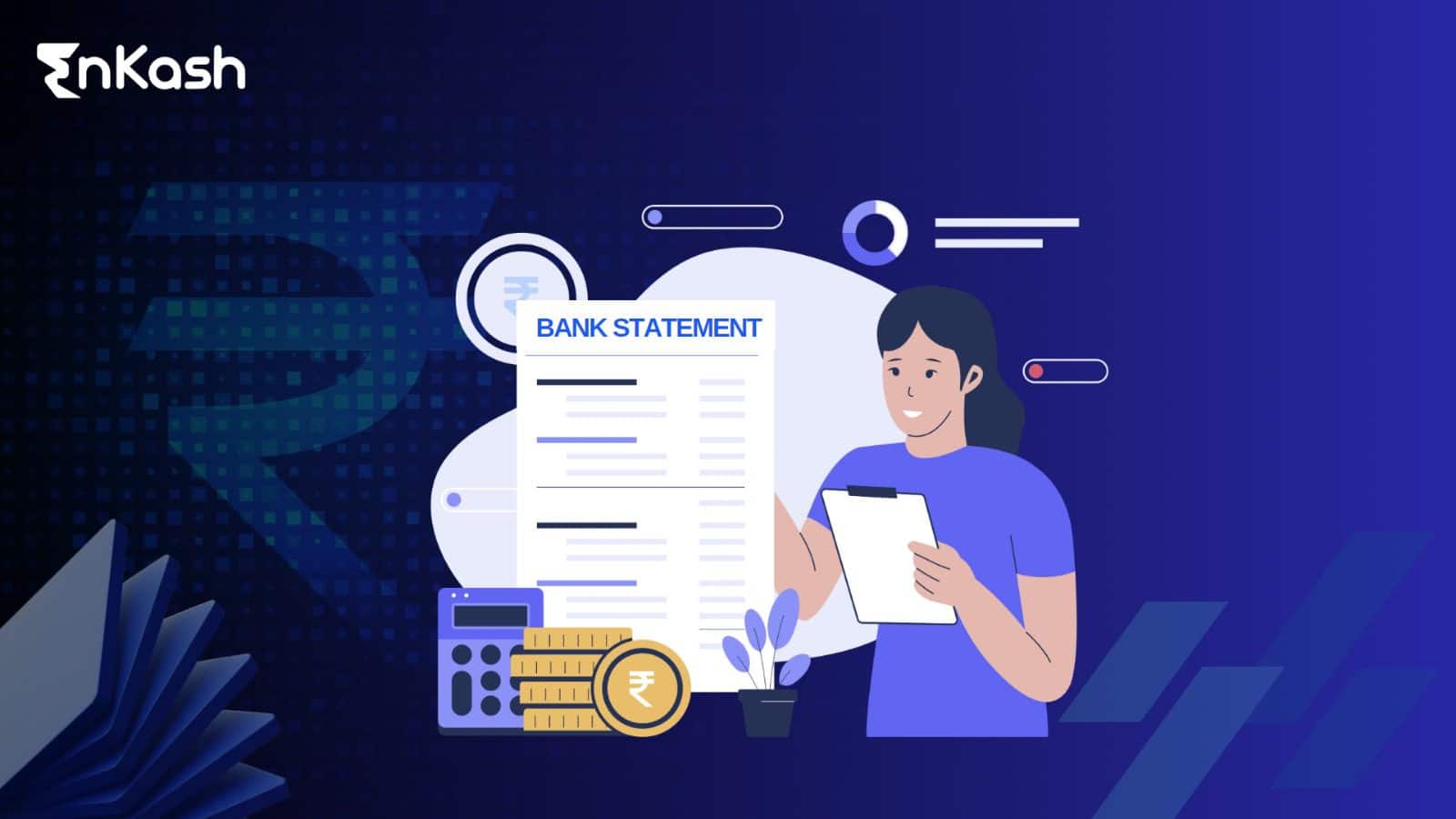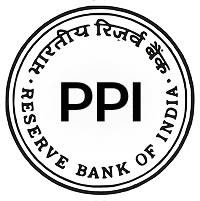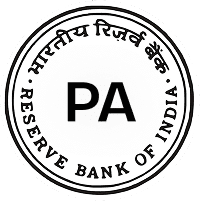What is SWIFT in Banking?
SWIFT in banking is a global messaging network that banks use to communicate when sending money internationally. When you transfer money to a German supplier, your Indian bank doesn’t contact the German bank directly. Both banks send messages through SWIFT to coordinate your transfer. SWIFT stands for Society for Worldwide Interbank Financial Telecommunication. This Belgium-based organization, established in 1973, now connects over 11,000 banks across 200 countries. Most international wire transfers pass through the SWIFT network, though certain regions also use local systems such as SEPA.
This is important for your business because understanding SWIFT enables you to track international payments more effectively. You can ask better questions when transfers get delayed. You’ll know why banks charge international transfer fees. You’ll make smarter decisions about timing important business payments.
Many SME owners treat international transfers as a black box. You give money to your bank, and somehow it reaches another country. Knowing how the SWIFT banking system actually works gives you control over this process instead of just hoping everything works out.
How the SWIFT Network and Payment System Works
When you initiate an international transfer for your business, your bank creates a SWIFT message containing all the payment details. For example, if you need to send ₹10 lakhs to a Singapore supplier, your bank packages this information into a standardized SWIFT format and transmits it through the network. **Important:** SWIFT doesn’t move your money. SWIFT carries the instructions that tell banks how to move your money. When you send ₹5 lakhs to London, SWIFT delivers the payment details while the actual rupees travel through separate banking channels.
The SWIFT message includes your supplier’s bank details, transfer amount, currency, and specific payment instructions. This message works like a detailed instruction manual for moving your money. SWIFT delivers this message to the Singapore bank within minutes.
Your actual money travels through correspondent banking relationships. Your Indian bank likely maintains accounts with major international banks like JPMorgan or Citibank. These correspondent banks facilitate the transfer of your funds to the final destination in Singapore.
This explains why SWIFT transactions take 1 to 5 days, even when the SWIFT message arrives instantly. The communication happens fast, but moving the actual funds takes time. Banks must verify details, run compliance checks, and coordinate with multiple financial institutions.
Your SWIFT transfer follows this path: First, your bank transmits payment instructions via SWIFT. Second, the recipient bank receives and confirms that it can process the payment. Third, correspondent banks on both sides coordinate to move your actual funds. Finally, your supplier receives the money in their Singapore account.
Knowing this process helps you manage expectations with international clients and suppliers. You understand why cross-border payments take longer than domestic UPI transfers. You can also troubleshoot delays more effectively when transfers get stuck somewhere in this chain.
Example of SWIFT Code
Every bank that processes international transfers has a unique SWIFT code. This functions as a banking address system. When you want to receive money from an overseas client, you provide them with your bank’s SWIFT code so their bank knows exactly where to send the funds. SWIFT codes contain 8 to 11 characters that identify your bank’s location and branch:
First 4 letters: Bank name identifier
Next 2 letters: Country code
Following 2 characters: City or region code
Last 3 digits: Specific branch (optional)
Many banks omit the final three digits, using a generic code for multiple branches.
Let’s take an example using the State Bank of India. SBI’s main SWIFT code is SBININBB. Here’s how it breaks down: SBIN identifies State Bank of India. IN represents India as the country. BB shows this code covers multiple cities across India since SBI doesn’t specify one location.
ICICI Bank uses ICICINBB for most branches. ICIC stands for ICICI Bank. IN means India. BB indicates a head office code that covers multiple locations. Some specific ICICI branches have longer codes like ICICINBBXXX, where XXX represents the particular branch.
You’ll need your bank’s SWIFT code whenever clients pay you internationally. Most Indian banks print their SWIFT codes on checkbooks and bank statements. You can also find them on your bank’s website or by calling customer service. When sharing your SWIFT code with international clients, ensure accuracy – one wrong letter can misdirect the entire transfer and create weeks of delays.
How SMEs Use SWIFT Payments
Most Indian SMEs use SWIFT payments for importing raw materials or exporting finished goods. If you manufacture textiles in Tamil Nadu and export to European buyers, you receive SWIFT transfers from their banks to your Indian account. The process works in reverse when you import cotton from Egypt and send SWIFT payments to their suppliers.
Freelancers and service providers also rely on SWIFT for international income. A software developer in Bangalore receiving project payments from a US client gets paid through SWIFT transfers.
Here’s what makes SWIFT payments different from your regular banking experience: You cannot cancel or modify a SWIFT transfer once your bank processes it. The money crosses international borders where Indian banking rules don’t apply. Recovery becomes complicated if you send funds to the wrong account.
SWIFT transfers cost more than domestic payments due to the complex international coordination involved. Indian banks typically charge ₹500 to ₹2,000 per outgoing SWIFT transfer, plus foreign exchange conversion fees. Incoming SWIFT payments may involve additional charges that the sending bank deducts from your funds.
The processing timeline varies significantly based on destination country, banking relationships, and compliance requirements. Transfers to major economies like the US or UK often clear faster than payments to smaller markets. Weekend and holiday schedules in multiple countries can extend processing times.
Smart SME owners plan their international payments around these realities instead of treating them like surprise obstacles. They factor in transfer costs when pricing international contracts and allow buffer time for critical supplier payments.
Tracking and Managing a SWIFT Transfer
Your bank provides you with a unique reference number called MT103 when you send money internationally. Save this number, you’ll need it to track your SWIFT transfer if issues arise.
Most Indian banks allow you to track SWIFT payments online. Log in to your banking app or website and navigate to the international transfer section. Enter your MT103 number to see your payment’s current status . The system tells you if your transfer is processing, completed, or stuck somewhere.
You can also call your bank with your MT103 number. Ask specific questions about your payment status. Which correspondent bank handles your transfer right now? What compliance checks are pending? When will the money reach your supplier? Contact your bank immediately when transfers take longer than expected. Most SWIFT payments finish within 3 to 5 business days. Longer delays mean something went wrong. Maybe you entered the wrong recipient details. Maybe compliance officers flagged your transfer. Maybe correspondent banks have technical problems.
Keep records when tracking problem transfers. Screenshot everything from your online banking. Write down what bank representatives tell you over the phone. Save copies of your original transfer documents. You need this evidence if delays drag on for weeks.
Give your MT103 number to international suppliers and clients. They can track your payment from their side too. Their bank can confirm when money arrives and help solve problems faster than working through multiple banks alone.
Most payment delays happen because someone entered the wrong information. Double-check everything before you send money abroad.
Cost, Time, and Challenges of SWIFT Payments
SWIFT transfers cost significantly more than domestic payments. Most banks charge ₹500 to ₹2,000 per outgoing international transfer, plus foreign exchange conversion fees. Some banks also charge for incoming SWIFT payments by deducting fees from the amount you receive.
Your SWIFT payment takes 1 to 5 business days to complete. This occurs because multiple banks must verify your transfer details and move funds through correspondent banking networks. Each bank in the chain adds processing time. Weekends and holidays in different countries slow things down further.
Plan your cash flow around these delays. Don’t promise suppliers you’ll pay them today if you’re sending money internationally. Tell clients their payments will take a week to reach you, even when everything goes smoothly. Build extra time into important business transactions that depend on international transfers.
Currency fluctuations add another challenge to SWIFT transfers. Exchange rates change between when you initiate your payment and when it actually processes. You might send ₹10 lakhs, but your supplier receives fewer dollars than expected because rates moved against you.
Some banks hold your international transfers for additional compliance checks. This happens more often with larger amounts or payments to certain countries. Your ₹15 lakh payment to a new supplier might sit in review for days while banks verify the transaction meets regulatory requirements.
Track your international payment costs over time. Many SMEs discover they spend thousands monthly on SWIFT fees without realizing it. This information helps you evaluate whether fintech alternatives make financial sense for your business.
Advantages and Limitations of SWIFT
SWIFT provides access to virtually every bank worldwide. Over 11,000 financial institutions use this network, enabling you to send money to suppliers in remote locations that fintech companies cannot reach. Your textile buyer in a small German town probably banks with an institution connected to SWIFT.
The SWIFT banking system offers robust security that banks have tested for decades. Every message is encrypted and authenticated before transmission. Banks trust SWIFT enough to process trillions of dollars daily through the network. This reliability matters when you’re sending large payments for important business deals.
SWIFT also provides standardized communication that works the same way globally. Whether you send money to London or Brazil, banks follow identical procedures for processing your transfer. This consistency reduces errors and confusion in international transactions.
But SWIFT has significant limitations for modern businesses. The system moves slowly compared to digital alternatives. Your domestic UPI transfer completes in seconds while SWIFT payments take days. This speed difference becomes frustrating when you need to make urgent international payments.
SWIFT costs more than most fintech solutions. Wise, Payoneer, and similar services often charge lower fees and offer better exchange rates than traditional banks. Many Indian SMEs now use fintechs for smaller international transfers and save SWIFT for large business transactions.
The SWIFT banking system also lacks transparency during processing. Once you send money, you get limited visibility into where your payment sits until it reaches the destination. Modern payment platforms provide real-time tracking that SWIFT cannot match.
SWIFT vs Other Payment Systems
SWIFT competes with several payment options for international business needs. Domestic systems like NEFT, RTGS, and UPI work faster and cost less but operate only within India. NEFT processes within hours, RTGS happens instantly during banking hours, and UPI completes in seconds. However, none of these systems can send money to your German supplier or American client.
Fintech companies like Wise and Payoneer offer real alternatives to SWIFT for international transfers. Wise typically costs 60% less than traditional bank SWIFT fees. Payoneer lets you hold multiple currencies and pay suppliers directly from your account balance. Both platforms provide transparent tracking that shows exactly where your money sits during processing.
These fintech solutions work faster than SWIFT, too. Wise transfers often complete within hours instead of days. Payoneer payments to other Payoneer users happen instantly. This speed advantage helps when you need to make urgent payments or manage tight cash flow cycles.
But SWIFT still wins in certain situations. When you’re sending large amounts like ₹50 lakhs for equipment purchases, banks offer better security and regulatory protection than fintechs. SWIFT also reaches banks that fintech companies cannot access, especially in developing countries or remote locations.
Use SWIFT when you need maximum reach and security for important business transactions. Choose fintechs for smaller, frequent payments where speed and cost matter more. Many successful SMEs use both systems depending on specific transfer requirements and maintain accounts with different providers to maximize payment flexibility.
Conclusion
SWIFT is not a money transfer service. SWIFT is the communication network that enables banks to coordinate international payments on your behalf. When you send ₹10 lakhs to a Thai supplier, SWIFT carries the payment instructions while your actual money travels through separate banking channels.
Understanding SWIFT gives you better control over your international business operations. You know why cross-border payments take longer than domestic UPI transfers. You can track problem transfers more effectively using MT103 reference numbers. You can plan cash flow around realistic SWIFT timelines instead of hoping payments arrive instantly.
This knowledge also helps you choose the right payment method for different situations. Use the SWIFT banking system for large transactions requiring maximum security and global reach. Consider fintech alternatives for smaller, frequent payments where speed and cost matter more than comprehensive banking networks.
Most SME owners treat international payments like magic. Money goes into their Indian bank and somehow appears in foreign accounts days later. But knowing how the SWIFT banking system works transforms you from a passive user into someone who can actively manage international transactions.
SWIFT payments become less mysterious when you understand the communication and settlement process behind every international transfer. This understanding helps you serve international clients better, manage supplier relationships more professionally, and avoid costly mistakes that delay important business payments.
Frequently Asked Questions
1. What does SWIFT stand for in banking?
SWIFT stands for Society for Worldwide Interbank Financial Telecommunication. This organization operates the global messaging network that banks use to communicate when processing international transfers.
2. Is SWIFT a payment system?
No. SWIFT is a communication system, not a payment system. SWIFT carries the instructions that tell banks how to move your money internationally. The actual funds travel through correspondent banking relationships separate from SWIFT messages.
3. How long do SWIFT transfers take?
Most SWIFT transfers complete within 1 to 5 business days. The exact timing depends on the countries involved, required compliance checks, and the number of correspondent banks handling your payment.
4. What is a SWIFT code, and where do I find it?
A SWIFT code is your bank’s unique international identifier. It contains 8 to 11 characters that specify your bank, country, and sometimes the specific branch. You can find your SWIFT code on bank statements, checkbooks, or by calling customer service.
5. How much do SWIFT transfers cost?
Indian banks typically charge ₹500 to ₹2,000 per outgoing SWIFT transfer plus foreign exchange conversion fees. Incoming transfers may also involve charges that get deducted from the money you receive.
6. Can I track my SWIFT payment?
Yes. Your bank provides an MT103 reference number when you send money internationally. Use this number to track your transfer through online banking, mobile apps, or by calling customer service.
7. When should I use SWIFT instead of fintech alternatives?
Use SWIFT for large transactions requiring maximum security, payments to remote locations that fintechs cannot reach, or when dealing with conservative suppliers who prefer traditional banking channels.
8. Is SWIFT secure for business payments?
Yes. SWIFT provides bank-level security with encryption and authentication for every message. Over 11,000 financial institutions trust SWIFT to handle trillions of dollars in daily transactions.






